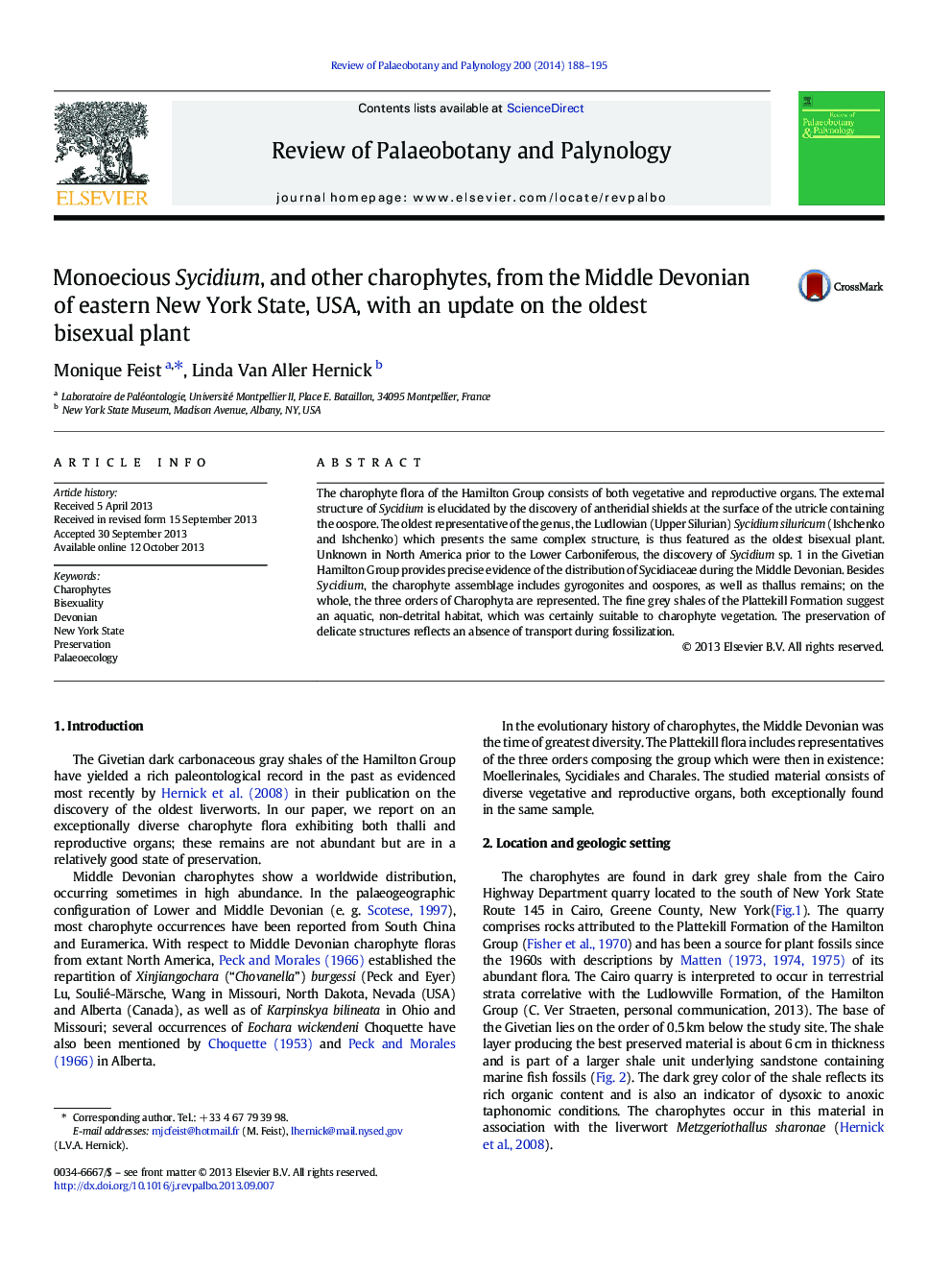| Article ID | Journal | Published Year | Pages | File Type |
|---|---|---|---|---|
| 6448783 | Review of Palaeobotany and Palynology | 2014 | 8 Pages |
â¢Discovery of Devonian charophytes with both vegetative and reproductive organsâ¢First evidence of monoecia in Sycidium showing antheridia connected to oosporesâ¢Sycidium becomes the oldest bisexual plant.â¢Thallus remains recall Palaeonitella as well as extant Nitelloideae.â¢First report of Sycidium from the Devonian of North America
The charophyte flora of the Hamilton Group consists of both vegetative and reproductive organs. The external structure of Sycidium is elucidated by the discovery of antheridial shields at the surface of the utricle containing the oospore. The oldest representative of the genus, the Ludlowian (Upper Silurian) Sycidium siluricum (Ishchenko and Ishchenko) which presents the same complex structure, is thus featured as the oldest bisexual plant. Unknown in North America prior to the Lower Carboniferous, the discovery of Sycidium sp. 1 in the Givetian Hamilton Group provides precise evidence of the distribution of Sycidiaceae during the Middle Devonian. Besides Sycidium, the charophyte assemblage includes gyrogonites and oospores, as well as thallus remains; on the whole, the three orders of Charophyta are represented. The fine grey shales of the Plattekill Formation suggest an aquatic, non-detrital habitat, which was certainly suitable to charophyte vegetation. The preservation of delicate structures reflects an absence of transport during fossilization.
